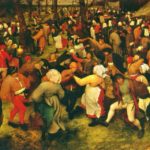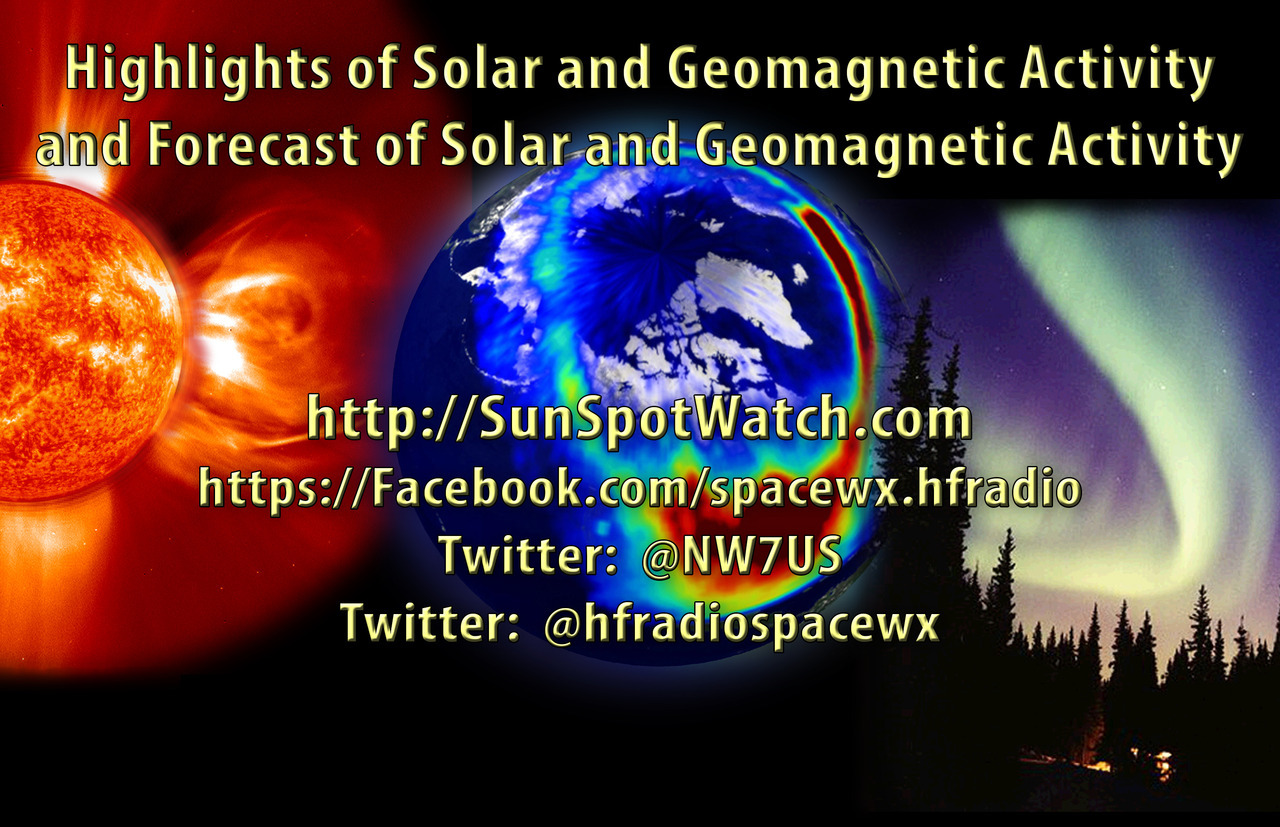 ICQ Podcast Episode 278 – Hamfest 2018
ICQ Podcast Episode 278 – Hamfest 2018
In this episode, Martin M1MRB is joined by Matthew Nassau M0NJX and Bill Barnes N3JIX to discuss the latest Amateur / Ham Radio news. Colin M6BOY rounds up the news in brief, and this episode’s feature is - Hamfest 2018
ICQ AMATEUR/HAM RADIO PODCAST DONORS
We would like to thank Avi Solomon, Danny Robson (GM6CMQ), Brett Stalbaum, Gair Matthews (G1VWC) and our monthly and annual subscription donors for keeping the podcast advert free. To donate, please visit - http://www.icqpodcast.com/donate
- The Chill of Solar Minimum
- WW2 Allied Bombing Altered Ionosphere
- Rare Lizard Tracked by Tiny Radio Tags
- ARRL and FCC Discuss Uncertified Imported VHF/UHF Transceivers
- FUNcube Operations Update
- RSGB Past President GI3KYP SK
- EchoLink Now Connected to Irish DMR Network
Colin Butler, M6BOY, is the host of the ICQ Podcast, a weekly radio show about Amateur Radio. Contact him at info@icqpodcast.com.
 LHS Episode #252: The Weekender XVII
LHS Episode #252: The Weekender XVII
 Welcome to the latest Weekender edition of Linux in the Ham Shack. This is the 17th installment, episode 252. In this episode, we talk about interesting contests coming up, like the Oceania DX Contest, Worked All Germany and more. We also talk about upcoming special event stations, JOTA, open source conferences like OLF and more. We also give you challenges to keep you on your toes, Linux distributions to get familiar with and some great hedonistic topics like food, beer and liquor. Thank you for listening and hope you have a great couple of weekends upcoming!
Welcome to the latest Weekender edition of Linux in the Ham Shack. This is the 17th installment, episode 252. In this episode, we talk about interesting contests coming up, like the Oceania DX Contest, Worked All Germany and more. We also talk about upcoming special event stations, JOTA, open source conferences like OLF and more. We also give you challenges to keep you on your toes, Linux distributions to get familiar with and some great hedonistic topics like food, beer and liquor. Thank you for listening and hope you have a great couple of weekends upcoming!
73 de The LHS Crew
Russ Woodman, K5TUX, co-hosts the Linux in the Ham Shack podcast which is available for download in both MP3 and OGG audio format. Contact him at russ@bluecows.com.
 LHS Episode #251: Party Like It’s 1499
LHS Episode #251: Party Like It’s 1499
 Welcome to the latest installment of Linux in the Ham Shack. You've tuned into Episode 251 in which we take on topics from ARRL elections to the latest hurricane heading for the Florida panhandle to expanded privileges at 50MHz for IARU Region 1. We also look at Microsoft's Infer.NET open AI framework, the latest Ansible, changes to FT8Call and much more. Thank you for listening!
Welcome to the latest installment of Linux in the Ham Shack. You've tuned into Episode 251 in which we take on topics from ARRL elections to the latest hurricane heading for the Florida panhandle to expanded privileges at 50MHz for IARU Region 1. We also look at Microsoft's Infer.NET open AI framework, the latest Ansible, changes to FT8Call and much more. Thank you for listening!
73 de The LHS Crew
Russ Woodman, K5TUX, co-hosts the Linux in the Ham Shack podcast which is available for download in both MP3 and OGG audio format. Contact him at russ@bluecows.com.
 Weekly Propagation Summary – 2018 Oct 08 16:10 UTC
Weekly Propagation Summary – 2018 Oct 08 16:10 UTC
Here is this week’s space weather and geophysical report, issued 2018 Oct 08 0135 UTC.
Highlights of Solar and Geomagnetic Activity 01 – 07 October 2018
Solar activity was very low this period. Region 2723 (S08, L=357, class/area=Dso/30 on 01 Oct) was the only active region with sunspots, but was quiet throughout the period. No Earth-directed CMEs were observed during the summary period.
No proton events were observed at geosynchronous orbit.
The greater than 2 MeV electron flux at geosynchronous orbit was at moderate levels throughout the period.
Geomagnetic field activity reached G1 (Minor) geomagnetic storm levels on 07 Oct due to the influence of a positive polarity CH HSS. Active conditions were observed on 01-02 Oct and quiet to unsettled levels were observed on 03, and 05-06 Oct. Quiet conditions prevailed on 04 Oct.
Forecast of Solar and Geomagnetic Activity 08 October – 03 November 2018
Solar activity is expected to be very low throughout the outlook period.
No proton events are expected at geosynchronous orbit.
The greater than 2 MeV electron flux at geosynchronous orbit is expected to reach high levels on 08-25 Oct with moderate flux levels expected throughout the remainder of the outlook period.
Geomagnetic field activity is expected to reach G1-G2 (Minor-Moderate) geomagnetic storm levels on 08 Oct and 03 Nov due to the influence of a positive polarity CH HSS. G1 (Minor) geomagnetic storm levels are expected on 19 Oct and active levels are expected on 09-10, 18, 20, and 22 Oct, due to the influence of multiple, recurrent CH HSSs.
Don’t forget to visit our live space weather and radio propagation web site, at: http://SunSpotWatch.com/
Live Aurora mapping is at http://aurora.sunspotwatch.com/
If you are on Twitter, please follow these two users: 1. https://Twitter.com/NW7US 2. https://Twitter.com/hfradiospacewx
– – – – – – – – – – – – –
Be sure to subscribe to our space weather and propagation email group, on Groups.io
https://groups.io/g/propagation-and-space-weather
Spread the word!
– – – – – – – – – – – – –
Links of interest:
+ Amazon space weather books: http://g.nw7us.us/fbssw-aSWSC
+ https://Twitter.com/NW7US
+ https://Twitter.com/hfradiospacewx
Space Weather and Ham Radio YouTube Channel News:
I am working on launching a YouTube channel overhaul, that includes series of videos about space weather, radio signal propagation, and more.
Additionally, I am working on improving the educational efforts via the email, Facebook, YouTube, Tumblr, and other activities.
You can help!
Please consider becoming a Patron of these space weather and radio communications services, beginning with the YouTube channel:
https://www.patreon.com/NW7US
The YouTube channel:
https://YouTube.com/NW7US
..
Visit, subscribe: NW7US Radio Communications and Propagation YouTube Channel
 Some Summer Short Wave Listening
Some Summer Short Wave Listening
 |
| courtesy:americanradiohistory |
Over the past few months I’ve spent some time tuning around the international shortwave bands.
I vividly recall how jam-packed these bands were when I first discovered the magic of radio, back in the peak years of Solar Cycle 19. Much has changed in this part of the radio spectrum since then, but after having read so many dire comments describing the demise of international SW broadcasting, I was pleasantly surprised at what I discovered.
Although there are certainly not the large numbers of stations there once were, there is still a large amount of activity to be found throughout the various bands allocated to international SW broadcasting.
 |
| courtesy: https://communicationwhiz.com/short-wave-radios-guide/ |
Trying to keep track of station schedules and frequencies is a hobby unto itself but now made easier with the availability of so many online information sources. As when younger, I found the best way to stay organized was to keep a SW logbook, eventually settling on a simple ‘diary’ format which is still evolving.
Its next refinement will be an additional notebook having separate pages devoted to each individual frequency within a given SW band. This will allow for updating frequency information from various postings of the daily online ‘heard’ reports.
I’ve always had a great interest in QSLs and collecting cards was one of the things that initially attracted me to SW radio back as a pre-teenaged DXer. For me, not much has changed in the last several decades and I still enjoy QSLs ... the real, traditional cards, as opposed to the now popular e-card. For me, an e-card just doesn’t have much appeal for some reason but for many others, they work just fine.
As I slowly re-learn much of what I had forgotten about SWL’ing, I discovered that there are still many SW broadcasters that will acknowledge a reception report with a real paper card ... just like the good old days!
If you are keen on doing some serious listening, I cannot recommend the WRTH highly enough.

Studying the latest WRTH revealed the QSL policies of most international as well as domestic SW broadcasters as well as contact information. It is a superb annual reference and well worth the investment! With this information in hand, my listening has become more focused on recording and submitting reception reports to those stations still practicing the courtesy of acknowledging reports with a traditional QSL. Many stations also issue an e-card, but these are of little interest to me at present.
With a small amount of spring-summer time devoted to SW listening, I generated and submitted a few reception reports along with linked audio files on my website ... so far, the following QSLs have arrived:
 |
| Radio Exterior de Espana |
 |
| 15520 kHz - Noblejas, Spain |
 |
| Radio Free Asia |
 |
| 9950 kHz - via IBB on Tinian Island, S. Pacific |
 |
| All India Radio (AIR) |
 |
| 9865 kHz - Bengaluru, India |
 |
| DX Clube Sem Fronteiras Broadcast via WRMI 7730 kHz, Miami |
 |
| T8WH - 9965 kHz Palau, South Pacific |
 |
| HSK9 - 5875 kHz Udon Thani, Thailand |
 |
| Radio Liangyou - Hong Kong |
 |
| 9275 kHz via Bocaue, Philippines site |
 |
| Radio Romania - 9730 kHz - Bucharest, Romania |
 |
| Radio Nikkei 2 |
 |
| 3935 kHz - Chiba, Japan |
I’ll do an upcoming blog on some of the great information and online sites to support international SW listening activities.
Steve McDonald, VE7SL, is a regular contributor to AmateurRadio.com and writes from British Columbia, Canada. Contact him at ve7sl@shaw.ca.
 Amateur Radio Weekly – Issue 220
Amateur Radio Weekly – Issue 220

October 7-13: Fire Prevention Week Amateur Radio Special Event
Fire Prevention Week special event stations N0F, N1F, N2F, N3F, N4F, N5F, N6F, N7F, N8F, and N9F will be QRV October 7-13. Plus the wildcard stations: KF2IRE and VE3FIRE.
Siemens Fire Safety USA Amateur Radio Club
An interview with Howard Michel, WB2ITX, the new ARRL CEO
I think that you’ll find this to be a great interview. Howard has won me over, and I hope that he’ll win you over, too.
K6BNU
ARRL, FCC Discussing Uncertified Imported VHF/UHF Transceivers
The Advisory broadly prohibits the ‘use’ of such radios, but our view is that there is no such prohibition relative to licensed Amateur Radio use.
ARRL
A new antenna using single atoms
We may be on the verge of so-called “atomic radio,” thanks to the development of a new type of antenna capable of receiving signals across a much wider range of frequencies (more than four octaves) that is highly resistant to electromagnetic interference.
Ars Technica
Hustler 6BTV Installation Update
While this is a great antenna, it requires a substantial amount of work installed in a ‘ground-mount’ configuration.
W5KV
About Microphones
A primer on mics for Ham Radio.
VE7SAR
Connecting an RTL-SDR Panadapter to a uBITX
uBITX is a fully analogue radio, but it can be combined with an RTL-SDR to create a panadapter display.
RTL-SDR.com
Video
How Solar Cells Work
Today I want to cover solar cells and solar power systems – partly because renewable energy is such a huge pursuit in our community.
SparkFun
Receive Beautiful Images of the Earth Directly From Space | GOES-16
While it’s a bit harder to receive data from GOES the extra effort is absolutely worth it.
The Thought Emporium
Get Amateur Radio Weekly in your inbox.
Sign-up here
Amateur Radio Weekly is curated by Cale Mooth K4HCK. Sign up free to receive ham radio's most relevant news, projects, technology and events by e-mail each week at http://www.hamweekly.com.
 The Spectrum Monitor — October, 2018
The Spectrum Monitor — October, 2018
 Stories you’ll find in our October, 2018 edition:
Stories you’ll find in our October, 2018 edition:
Tracing the Development of the AM Broadcast Transmitter
John F. Schneider W9FGH
In the Beginning, there was King Spark. There were a few early attempts at using spark equipment to transmit the human voice. This was because a spark signal consists of a continuous sequence of decaying waves, called “damped waves.” The signal faded in intensity as the energy of each spark dissipated, until it was replaced by a new signal from the next spark. In the early 1900s, there were only two devices that were capable of generating a continuous wave – an arc transmitter and a high-frequency alternator. But it was the invention of the “Audion” triode vacuum tube by Lee de Forest in 1906 that created a revolution in radio communications. Its ability to function as both an oscillator and amplifier opened doors to the creation of a practical all-electronic speech transmitter. John takes a detailed look at the evolution of the AM broadcast transmitter.
Has it Really Been a Decade!?
By Troy J. Simpson W9KVR
There’s nothing easy about teaching school anywhere but teaching, coaching, keeping a school amateur radio club going, being a dad and a husband makes time really fly. So much so that Glenn Raymond Middle School teacher, Troy Simpson, hadn’t realized their club station license was already up for renewal until he received the notice from the FCC. Troy recaps just the last few years of this very active and successful amateur radio school club as he prepares this month for another School Club Roundup.
SDR Report Part 3: From High-End SDR Receivers to SDR Transceivers
By Thomas Witherspoon K4SWL
Part one of our series on Software Defined Radios (SDRs), which appeared in the June issue, focused on the nomenclature and components of a functioning SDR system. Part two, in the July issue, took a look at some affordable SDR station options that would propel you into the world of SDRs for less than $200 US. This month, Thomas dives a little deeper into the SDR rabbit hole, and investigates higher-end SDRs as well as ham radio transceivers with embedded SDRs that include high-ticket rigs that have intel-agency specs and capabilities you won’t find in any analog radio at any price.
A Visit to the Tokyo Ham Fair 2018
By Keith Baker KB1SF/VA3KSF
Once again, Keith was asked to join the Dayton Amateur Radio Association team in a trip to Japan to attend the annual Tokyo Ham Fair, which is sponsored by the Japan Amateur Radio League (JARL). As Secretary-Treasurer of AMSAT North America, Keith would be doing double duty during this trip. And, as a regular contributor to TSM, Keith nailed the trifecta with this photo essay of that trip. Keith renewed many old acquaintances, got up close and personal with new ham equipment and enjoyed handing out goodies to everyone he saw.
Scanning America
By Dan Veeneman
Hialeah, Florida, and a Public Service Radio Feud
Federal Wavelengths
By Chris Parris
Hurricane Florence Response
Milcom
By Larry Van Horn N5FPW
Monitoring the US Coast Guard and the COTHEN HF Radio Network
Utility World
By Hugh Stegman
US Coast Guard Mobilizes for Hurricane Florence
Shortwave Utility Logs
By Hugh Stegman and Mike Chace-Ortiz
VHF and Above
By Joe Lynch N6CL
International Space Station Astronauts are Calling CQ Students
Digitally Speaking
By Cory GB Sickles WA3UVV
Nothing Changes if Nothing Changes
Amateur Radio Insights
By Kirk Kleinschmidt NT0Z
Transmit Audio—How’s Your Sound?
Radio 101
By Ken Reitz KS4ZR
Viasat: Help for Rural Broadband Access
The World of Shortwave Listening
By Andrew Yoder
US and International Pirate Shortwave Broadcasters
The Shortwave Listener
By Fred Waterer
Creepy October Shortwave Programming
Maritime Monitoring
By Ron Walsh VE3GO
Stormy Weather and Changing Times
The Longwave Zone
By Kevin O’Hern Carey WB2QMY
SDR, Step One
Adventures in Restoration
By Rich Post KB8TAD
Reviving a Comanche: The Siltronix 1011D
Antenna Connections
By Dan Farber AC0LW
Artificial Ground, Part Two
Radio Horizons
Review: National Radio Club’s 39th Edition AM Radio Log
By Larry Van Horn N5FPW
The Spectrum Monitor is available in PDF format which can be read on any desktop, laptop, iPad®, Kindle® Fire, or other device capable of opening a PDF file. Annual subscription is $24. Individual monthly issues are available for $3 each.
Ken Reitz, KS4ZR, is publisher and managing editor of The Spectrum Monitor. Contact him at editor@thespectrummonitor.com.















